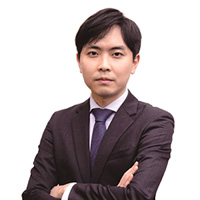
It had been a bunker for 21 years beginning in 1962, then served as museum storage. It took another 22 years for the National Palace Museum of Korea to claim the 19-room storage space in the heart of Seoul in 2005.
The underground facility beneath Gyeongbokgung, the main palace from the Joseon era (1392-1910), has in place highly sophisticated conservation technologies as well as strict protocols for entry, an NPMK official said during a media tour Wednesday, as reporters put on masks and covered their shoes with cloth booties.
Room No. 10, the first stop, showcased royal collections from the Joseon era ranging from a seal to books to documents. The 628 objects used for royal ceremonies were not taken out from their wooden containers for close viewing over preservation worries.
“Seals were made of gold, silver and jade,” said Jeong So-young, the NPMK’s director overseeing collection management. Jeong, who led the tour, added the containers were cut from Paulownia, or empress trees, which help balance humidity inside.
“The 628 items all earned recognition,” Jeong said of the UNESCO Memory of the World recognition in 2017.
Room No. 11 included 766 signboards from the same era. Some pieces of the collection were hung upside down, an intentional fix meant to prevent further relic erosion, according to Jeong.
One upside-down signboard used to hang at the shrine Gyeongmogung, built in the 18th century, Jeong explained, adding that the museum has been maintaining it since 1994.
The 766 items were recognized in 2018 when the UNESCO Asia-Pacific Memory of the World Committee decided to include them on its registry.
The last stop was what the museum calls “visible storage,” the latest space of the 19-room storage facility set up in 2019.

Like all the others, the visible storage is also not open to the public, but museum guests can get a partial glimpse through a glass wall. The “open storage” chiefly housed dish collections used for rituals involving the Joseon shrine Jongmyo.
One of the priorities for the museum, Jeong said, is finding a separate space to expand the current storage facility. It is already running over capacity and seriously needs more room, she added, noting that taking down exhibit halls is the only way to make more room at the existing site.
Chung Yong-jae, the director of the NPMK, said he expects to see some progress on expansion by 2027.
Meanwhile, Chung said of taking advantage of land near the Joseon tombs spread across 18 different sites in Seoul, Gyeonggi Province and Gangwon Province, “We’re thinking of setting up spaces where we can not only house artifacts but make the place interactive, so people can come over and enjoy events associated with those relics.”


















